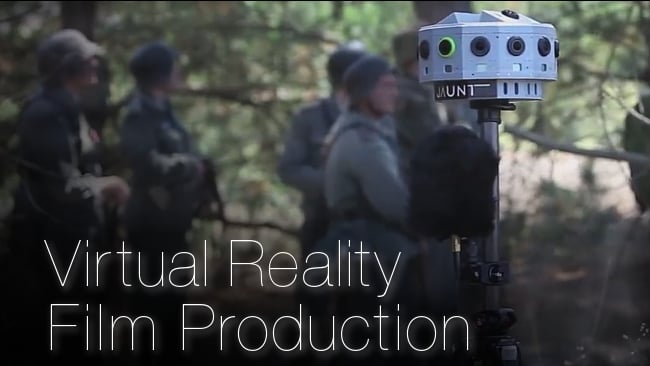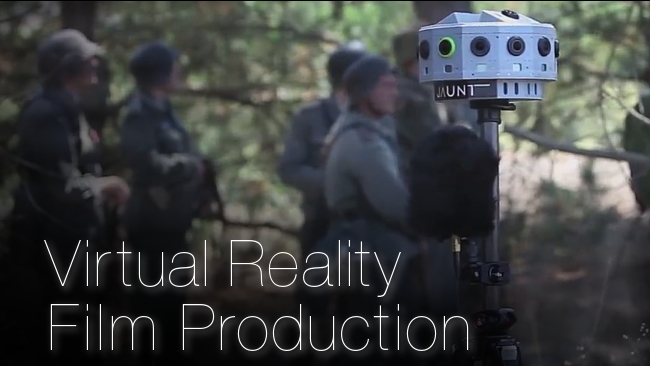

Whether you think virtual reality is nothing more than a gimmick or the next big thing, it's coming and may transform how we approach film production, as evidenced by a short virtual reality film by New Deal Studios and Jaunt VR.
Jaunt VR is making a name for itself developing virtual reality cameras and utilities suitable for next generation film productions; New Deal Studios, a leading visual effects and production studio, has been on the cutting edge of cinematic virtual reality, making VR films for Disney and others. So, the pairing of the two companies to produce The Mission, a short war film developed to be watched with one of Jaunt's virtual reality headsets, gives audiences an excellent look at where the technology and art of virtual reality narrative is at in this early stage...if you're lucky enough to get your hands on a VR headset to watch it.
Or rather, experience it, as a watcher of virtual reality is in control of where the 'camera', or view, is pointed, in nearly 360 degrees as the action unfolds. They say its literally like stepping into a movie and looking around, which sounds cool, but let's take a step back to consider what a virtual reality movie really is: a radical departure from the norm which has the power to redefine the cinematic experience.
Since Hollywood's Golden Age to now, when we think of 'movies', we are referring to stories told in sound and two-dimensional visuals occupying a horizontally-oriented rectangle. The entire history of the cinematic craft for all disciplines relied upon this constant. Sure, the size and shape of the rectangle changed, the fidelity of the images improved, and speakers multiplied, but regardless of those adjustments, the primacy of the rectangle was never really questioned. That is, until the dawn (or is it rebirth?) of virtual reality.
Think of something as basic as a cut, any cut, in any film. How does the cinematic language of a cut change when the director no longer has complete control of what part of the scene audience members are viewing? Does the editor simply chose the most likely framing, given what's occurring in the story at that moment? And is there a toll paid for every cut while viewing a film made for virtual reality exhibition? Will every cut jar the VR viewer, creating chaotic contrasts even when the director would prefer smoother transitions? Will editors simply "throw a fade on it?"
We are at this very strange and exciting time when the wonderful technology of yesteryear's science fiction tales are beginning to arrive on our doorsteps. But new technologies don't just transform our lives for the better. They also disrupt our ways of doing things, like making movies, watching movies, and even defining what a movie is. So while you may be wondering something like "what's the best camera value for my upcoming production?," I urge you to stay abreast of what's happening in the consumer virtual reality space. It could have an enormous impact on our industry sooner than you think.
Credit to pop tech news site GIGAOM for alerting us to this story. And here's a behind the scenes featurette on the making of 'The Mission':
Tags: VR & AR


Comments